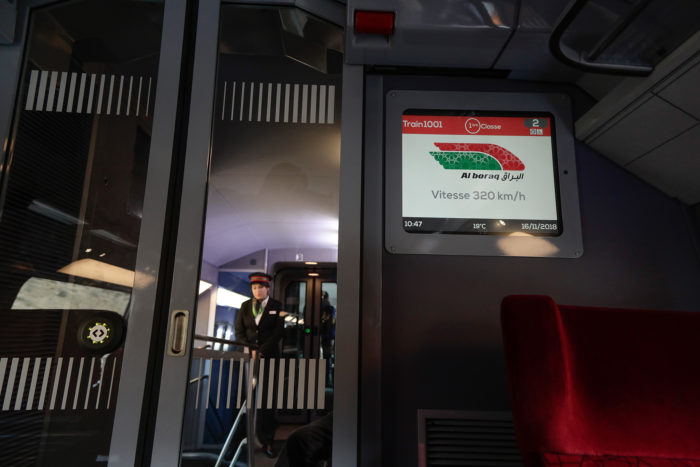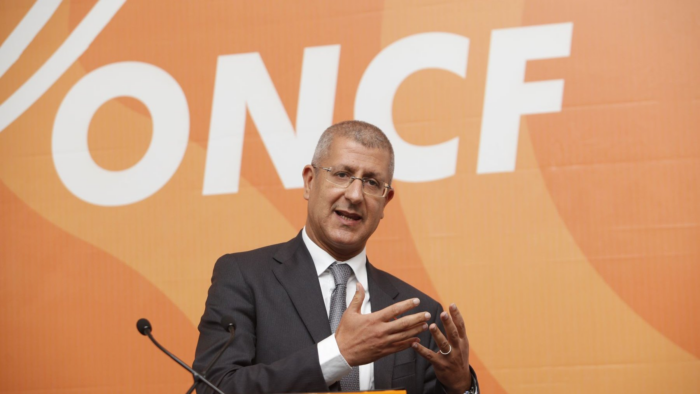20 billion dirhams. That’s the prize money major players in the railway sector have been eyeing for months. At the moment of writing, companies had one week left to bid and try to win the contracts from the National Office of Railways (ONCF, Office national des chemins de fer). By July 9th, Mohamed Rabie Khlie was set to receive the final bids for several significant projects under the supervision of ONCF.
Firstly, there are the high-speed train routes (LGV, ligne à grande vitesse) that will connect Tangier to Marrakesh. There’s also the acquisition of trains for intercity transport on the Fez-Marrakesh and Kenitra- Fez lines. Finally, ONCF is seeking a partner to enhance regional transport services in major urban centers such as Casablanca, Rabat, and Marrakesh.
This market is strategically important as it aligns with the new development model and aims to strengthen the transport network ahead of the major 2030 World Cup milestone. Ambitiously, the project also aims to « contribute to the development of a Moroccan railway industrial ecosystem, » according to a document reviewed by TelQuel. Major companies are gearing up, with some considering breaking out the big guns to tilt the balance in their favor.
From LGV to RER
What does the market entail? In total, ONCF plans to acquire 168 trains. Eighteen of these (costing nearly 4.5 billion dirhams) are destined for the high-speed line to Marrakesh. Originally, ONCF planned to deploy 18 trains on the Casablanca-Tangier LGV, but due to cost considerations, only 12 sets are currently operational. As for the maintenance center in Tangier-Mghogha for high-speed train components, it has a capacity of 30 trains, expected to operate at full capacity by 2029, the projected delivery date for the last LGV sets, according to ONCF estimates.

As for trains, another forty are slated to be deployed by 2029 for intercity transport on the Fez-Marrakesh and Kenitra-Fez lines, costing 3.8 billion dirhams. ONCF also plans to expand its network in the Casablanca-Settat region, bolstering the role of the economic capital as a hub. This includes acquiring 60 trains for routes originating from the metropolis to destinations such as Mohammed V Airport, Settat, Khouribga/Oued Zem, and El Jadida (including the development of the El Jadida-Settat line). These are expected to integrate into the network at a constant rate of 15 trains per year between 2027 and 2030.
ONCF is also looking to enhance its rolling stock for intraregional transport, particularly in Casablanca, Rabat, and the Marrakesh-Benguerir corridor. To this end, they plan to acquire 50 new trains at an estimated cost of 3.3 billion dirhams. These trains will facilitate the establishment of 5 new RER lines between Casablanca, Zenata, Mohammedia, and
Bouskoura, among others. Note that bidding candidates have the opportunity to target specific projects.
Priority to “Made in Morocco”
The money is meant for more than just acquiring new trains for ONCF, however. The partnership agreement that ONCF intends to sign with its future provider includes « an industrial offset clause involving the establishment of a long-term partnership for the maintenance of rolling stock and an industrial project for the production of motorized trains in Morocco, » according to the ONCF tender overseen by Rabie Khlie.

In plain English, this means that a portion of the trains will be manufactured in Morocco. The trains acquired under this contract will have a local integration rate ranging from 5% to 80%, as outlined in a document reviewed by TelQuel.
The goal of this agreement is to contribute to the development of the railway industry in Morocco. Notably, an initial industrial offset clause laid the foundation for this ecosystem. The agreement for the construction of the first TGV included the establishment of a cable and component factory by Alstom, as well as a prioritization of Moroccan suppliers by the French company. The contract with Alstom also led to the creation of the Railway Training Institute, which opened its doors in Rabat in 2015.
Three Candidates and Considerations
According to our information, the French company Alstom is among the candidates vying for this contract. As reported by The Desk, Alstom will promote its latest TGV-M: wider (capable of accommodating 740 passengers compared to 630 for Al Boraq), more aerodynamic, capable of traveling at 350 km/h, yet cheaper than previous models.
Spanish company Talgo is also in the running, confirming the commitment of Spanish Minister of Transport Oscar Puente Santiago, announced last March, to « contribute » to the development of the Moroccan railway sector. Talgo can leverage its Talgo Avril, a train with a capacity of 600 seats and a maximum speed of 360 km/h. Like Alstom, which has experience in regional transport support in Paris, Talgo also boasts extensive experience in developing intercity networks.
The surprise contender in this bidding could be South Korean Hyundai Rotem. In terms of TGV, the Asian manufacturer has designed the HEMU-430X, a high-speed train that has already reached speeds of 421 km/h. According to our information, Hyundai Rotem, which is part of the Hyundai Motor Group (including the automobile manufacturer), is interested in the urban transport market. To maximize its chances, the CEO of the Korean company, Lee Yong- Bae, is expected to visit Morocco.
In fact, a few weeks ago, in an interview published in our columns, South Korean Ambassador to Morocco Yoon Yeonjean expressed the desire to see Korean companies participate in the Kingdom’s major projects. This intervention is not coincidental, as ONCF’s considerations extend beyond financial and technical aspects.
According to our sources, Rabie Khlie’s decision will also be influenced by diplomatic considerations and the geopolitical interests of the country. Therefore, questions remain. Will Spain be favored given the recent rapprochement between Madrid and Rabat, especially in light of the future co-organization of a World Cup? Will France take the step towards historic recognition of the Sahara to strengthen a longstanding partnership between the two countries? Or will Morocco seek to diversify its partnerships by choosing South Korea? Amidst these uncertainties, one certainty remains: « The decision will not be made overnight. It is not a simple choice based entirely on technical factors. Judgment will be lengthy and complicated, » a source familiar with the matter confided.
Written by Yassine Majdi, edited in English by Eric Nielson




